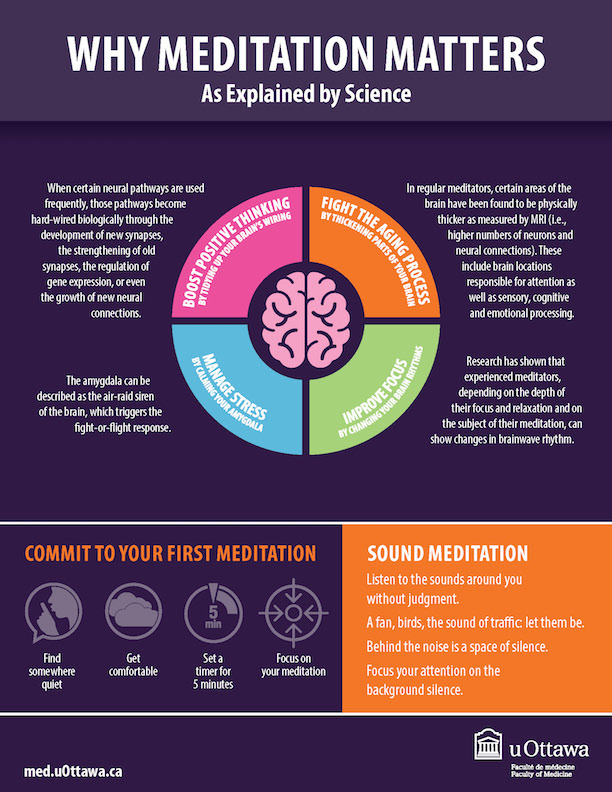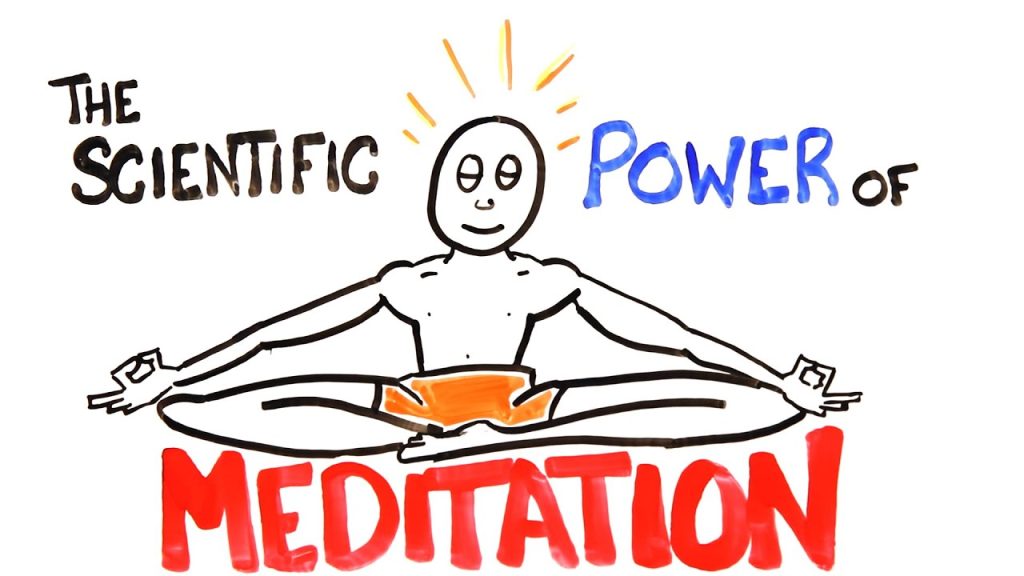If you’ve ever wanted to attempt meditation but weren’t sure where to start, look no further. This article is the best resource for those who want to understand more about the practice. We will explore the science behind meditation, its numerous benefits for both mind and body, and provide practical tips on how to incorporate meditation into your daily life. Whether you’re a beginner or someone looking to deepen your practice, this article will demystify the world of meditation and show you just how accessible and transformative it can be.
The Science Behind Meditation
What is meditation?
Meditation is a practice that involves training the mind to focus and redirect thoughts. It is often used as a technique for relaxation, stress reduction, and promoting overall well-being. While meditation is rooted in ancient traditions, it has gained significant popularity in recent years as more and more people recognize its numerous benefits.
How does meditation affect the brain?
Research has shown that meditation can have significant effects on the brain. Regular practice of meditation can lead to structural changes in various regions of the brain, particularly in areas associated with cognitive processing, emotion regulation, and attention. These changes can potentially enhance various cognitive abilities and emotional well-being.
The role of neurotransmitters in meditation
Neurotransmitters are chemical messengers in the brain that play a crucial role in transmitting signals between nerve cells. Several neurotransmitters, such as dopamine and serotonin, are associated with mood regulation and overall mental well-being. Studies have shown that meditation can increase the release of these neurotransmitters, leading to improved mood and reduced symptoms of anxiety and depression.
Impacts of meditation on mental and physical health
Meditation has been found to have a wide range of benefits for both mental and physical health. Regular practice of meditation has been shown to reduce stress, anxiety, and symptoms of depression. It can also improve focus, concentration, and overall cognitive abilities. Furthermore, meditation has been found to enhance emotional well-being, increase self-awareness, and promote better sleep quality. Additionally, meditation can have a positive impact on physical health by boosting the immune system, improving cardiovascular health, and aiding in pain management.
Research studies on meditation
Numerous scientific studies have been conducted to investigate the effects of meditation on various aspects of health and well-being. These studies have consistently shown that meditation can have significant positive effects on mental and physical health. For example, a study published in the Journal of Consulting and Clinical Psychology found that mindfulness meditation significantly reduced symptoms of anxiety, depression, and stress. Another study published in the Journal of Alternative and Complementary Medicine found that meditation improved sleep quality in individuals with insomnia. These research findings support the effectiveness of meditation as a holistic approach to improving overall well-being.

Benefits of Meditation
Stress reduction and management
One of the most well-known benefits of meditation is its ability to reduce stress. When you meditate, you engage in deep relaxation, which triggers the body’s relaxation response and helps counteract the effects of chronic stress. Regular meditation practice can help you develop resilience to stress and enhance your ability to manage stressful situations more effectively.
Improved focus and concentration
In today’s fast-paced world, maintaining focus and concentration can be a challenge. Meditation can help improve your ability to concentrate by training the mind to remain focused on the present moment. The practice of mindfulness meditation, in particular, helps strengthen your attention and allows you to stay centered, even in the midst of distractions.
Enhanced emotional well-being
Meditation has a profound impact on emotional well-being. It helps cultivate positive emotions, such as joy, gratitude, and compassion, while reducing negative emotions, such as anger, fear, and sadness. Regular meditation practice can lead to a greater sense of emotional balance, increased self-esteem, and improved overall mood.
Increased self-awareness
Meditation provides an opportunity to develop self-awareness by observing and understanding your thoughts, emotions, and physical sensations without judgment. This self-awareness allows you to gain insight into your own patterns of behavior and thought, enabling you to make positive changes in your life and relationships.
Better sleep quality
If you struggle with sleep issues, meditation can be a powerful tool to improve sleep quality. By practicing meditation before bedtime, you can calm the mind, relax the body, and create an optimal environment for sleep. Regular meditation has been shown to reduce insomnia and improve overall sleep duration and quality.
Boosted immune system
Research has demonstrated a link between meditation and a strengthened immune system. Regular meditation practice can increase the activity of natural killer cells, which play a crucial role in combating viruses and cancer cells. By boosting your immune system, meditation helps protect against various illnesses and promotes overall health and well-being.
Reduced anxiety and depression
Anxiety and depression are two common mental health conditions that can significantly impact daily life. Meditation has been shown to be effective in reducing symptoms of anxiety and depression by promoting relaxation, reducing negative thought patterns, and increasing self-compassion. It provides a natural and holistic approach to managing these mental health concerns.
Improved cardiovascular health
The practice of meditation can have a positive impact on cardiovascular health by reducing blood pressure, improving heart rate variability, and decreasing the risk of heart disease. Research suggests that meditation promotes relaxation and stress reduction, leading to improved cardiac function and overall cardiovascular health.
Pain management
Meditation has long been used as a complementary therapy for pain management. By cultivating awareness and acceptance of physical sensations, meditation can help individuals better cope with chronic pain. It can also reduce the perception of pain and improve the quality of life for individuals dealing with chronic pain conditions.
Different Types of Meditation
Mindfulness meditation
Mindfulness meditation involves focusing attention on the present moment and observing thoughts and sensations without judgment. It cultivates a state of non-reactive awareness and equanimity, helping individuals develop a deep sense of self-awareness and acceptance.
Transcendental meditation
Transcendental meditation is a technique where a specific mantra or phrase is repeated silently to calm the mind and induce a state of deep relaxation. It is practiced for 20 minutes twice a day, allowing the mind to transcend normal waking consciousness.
Loving-kindness meditation
Loving-kindness meditation involves cultivating feelings of love, kindness, and compassion towards oneself and others. It typically involves repeating specific phrases or visualizing sending positive wishes to oneself, loved ones, neutral individuals, and even difficult individuals.
Guided visualization
Guided visualization is a form of meditation that involves mentally picturing a specific scenario or situation. It can be used for relaxation, goal setting, and creating a positive mental image of desired outcomes.
Mantra meditation
Mantra meditation involves the repetition of a specific word or sound, known as a mantra. The repetitive chanting of the mantra helps focus the mind and induce a state of relaxation and heightened awareness.
Yoga meditation
Yoga meditation combines physical postures, breath control, and meditation techniques. It is practiced to promote physical strength, flexibility, and overall well-being while also cultivating a calm and focused mind.
Qi gong
Qi gong is a Chinese meditation practice that combines slow movements, coordinated breathing, and focused attention. It aims to cultivate and balance the body’s vital energy, known as “qi,” and promote physical health and emotional well-being.
Tai chi
Tai chi is a martial art that incorporates meditation, deep breathing, and slow, deliberate movements. It is practiced to improve balance, flexibility, and mental focus while promoting relaxation and overall health.
Getting Started with Meditation
Creating a conducive environment for meditation
To create an optimal environment for meditation, find a quiet and clutter-free space where you can sit comfortably without disturbance. You can enhance the atmosphere by dimming the lights, using essential oils or incense, and playing soothing background music or nature sounds.
Choosing the right time for meditation
Choosing a consistent time for meditation can help establish a routine and make it easier to integrate into your daily life. Determine a time that works best for you, whether it’s in the morning to start your day with clarity and calmness or in the evening to relax and unwind before bed.
Finding a comfortable meditation posture
Find a comfortable sitting position that allows you to remain alert and relaxed. You can sit cross-legged on a cushion or chair, ensuring your spine is straight and your shoulders are relaxed. If sitting is uncomfortable, you can also try meditating while lying down or even walking slowly and mindfully.
Breathing techniques in meditation
Focus on your breath as a point of concentration during meditation. Take slow, deep breaths, inhaling through your nose and exhaling through your mouth. Pay attention to the sensation of the breath entering and leaving your body, allowing it to anchor your attention in the present moment.
Practical tips for beginners
As a beginner, start with shorter meditation sessions, such as 5-10 minutes, and gradually increase the duration as you become more comfortable. Be patient with yourself and don’t expect immediate results. Remember that meditation is a practice, and consistency is key to experiencing its benefits.
Setting realistic goals
Set realistic goals for your meditation practice. Rather than striving for perfection or a certain outcome, focus on establishing a regular practice and cultivating a sense of presence and awareness. Choose intentions that align with your personal values and aspirations.
Incorporating meditation into the daily routine
Integrate meditation into your daily routine by finding moments throughout the day to practice mindfulness. This could be during everyday activities like washing dishes, taking a shower, or walking in nature. By bringing mindfulness into your routine, you can infuse your day with a sense of calm and clarity.
Dealing with distractions and thoughts
It is natural for the mind to wander during meditation, and distractions and thoughts will arise. Instead of resisting or fighting against them, simply acknowledge them and gently guide your attention back to your point of focus, such as the breath or a mantra. Be patient and compassionate with yourself as you navigate the fluctuations of the mind.
Finding guided meditation resources
Guided meditation resources, such as smartphone apps, online platforms, or audio recordings, can be helpful for beginners. These resources provide structured guidance and enable you to explore different meditation techniques and themes that resonate with you.
Joining a meditation group or class
Consider joining a meditation group or taking a meditation class to deepen your practice and connect with like-minded individuals. Group meditation sessions offer a supportive and nurturing environment where you can learn from experienced practitioners and share insights and experiences.
Overcoming Common Challenges in Meditation
Restlessness and impatience
Restlessness and impatience are common challenges that can arise during meditation, especially for beginners. Accept that restlessness and impatience are natural parts of the meditation process and practice observing them without judgment. Allow yourself to be present with these feelings, knowing that they will eventually pass.
Difficulty in quieting the mind
Quieting the mind can be challenging, as thoughts often arise and distract our attention. Rather than trying to forcefully suppress thoughts, practice observing them with curiosity and detachment. Return your focus to your point of concentration, such as the breath or a mantra, each time you become aware of wandering thoughts.
Feelings of frustration or self-judgment
It is common to feel frustrated or judgmental when you have expectations about how your meditation practice should be. Remember to approach meditation with an attitude of self-compassion and non-judgment. Treat yourself with kindness and understanding, knowing that every meditation experience is unique and valuable.
Physical discomfort during meditation
Physical discomfort, such as stiffness or discomfort in the legs, back, or neck, can arise during meditation. Experiment with different sitting postures or try using props like cushions or blankets to provide support and alleviate discomfort. If the discomfort persists, consider practicing meditation in a different posture, such as lying down or walking.
Lack of consistency in practice
Maintaining a consistent meditation practice can be challenging, especially when life gets busy. Set realistic goals and create a routine that works for you. Remember that even brief moments of mindfulness throughout the day can have a positive impact. If you fall off track, don’t be discouraged. Simply recommit to your practice and begin again.
Meditation Techniques for Specific Goals
Meditation for stress relief
To relieve stress, practice mindfulness meditation by focusing on your breath and observing your thoughts and emotions without judgment. You can also try loving-kindness meditation to cultivate feelings of compassion and kindness towards yourself and others.
Meditation for better sleep
To improve sleep quality, practice a relaxing meditation routine before bedtime. Focus on deep breathing and gentle stretching to relax the body and create a calm state of mind. Guided visualization meditation can also be helpful in creating a peaceful and conducive mental environment for sleep.
Meditation for focus and productivity
To enhance focus and productivity, mindfulness meditation is particularly effective. Engage in meditation sessions that emphasize maintaining present-moment awareness and help train the mind to stay focused on the task at hand.
Meditation for emotional healing
For emotional healing, loving-kindness meditation can be highly beneficial. By directing loving-kindness towards yourself and others, you can cultivate a sense of compassion, forgiveness, and emotional well-being. Mindfulness meditation can also be helpful in acknowledging and processing difficult emotions.
Meditation for enhancing creativity
To enhance creativity, engage in meditation practices that promote relaxation and expand awareness. Mindfulness meditation can help free the mind from distractions and enable the flow of creative ideas. Guided visualization meditation can also be effective in tapping into the imagination and facilitating the creative process.
Meditation for pain management
For pain management, mindfulness meditation is commonly used. By observing bodily sensations and practicing non-reactivity, you can develop a more accepting and compassionate relationship with pain. Mindfulness-based pain management techniques can help reduce the perception of pain and improve overall quality of life.
Meditation for reducing anxiety and depression
To reduce anxiety and depression, various meditation techniques can be beneficial. Mindfulness meditation, loving-kindness meditation, and mantra meditation can all help cultivate a sense of calm, inner peace, and self-compassion. Regular practice can significantly alleviate symptoms and promote emotional well-being.

Combining Meditation with Other Practices
Yoga and meditation
Yoga and meditation seamlessly complement each other. The physical postures and breath control of yoga prepare the body and mind for meditation. The combination of both practices enhances flexibility, relaxation, and mental focus.
Meditation and journaling
Combining meditation with journaling offers a powerful way to explore your thoughts, emotions, and insights. After a meditation session, take a few moments to reflect on your experience and write down any thoughts, feelings, or realizations that arise. This process can deepen self-reflection and personal growth.
Meditation and affirmations
Affirmations are positive statements that affirm desired qualities or goals. Combining meditation with affirmations allows you to align your thoughts, beliefs, and intentions with a deep state of relaxation and receptivity. Repeat affirmations during meditation to reinforce positive thinking and foster personal growth.
Meditation and gratitude
Gratitude meditation involves focusing on feelings of gratitude and appreciation for the present moment and the blessings in your life. Practice gratitude meditation to cultivate a sense of contentment, joy, and appreciation for the simple pleasures and experiences that often go unnoticed.
Meditation and visualization
Visualization meditation involves creating mental images of desired outcomes or desired states of being. Combine meditation with visualization techniques to activate the power of the imagination and harness the subconscious mind’s creative potential.
Meditation and mindful eating
Mindful eating involves bringing mindfulness to the act of eating, savoring each bite, and paying attention to the sensory experience of food. Start your meal with a short meditation to bring yourself into a present and calm state of mind, enhancing the enjoyment and nourishment of food.
Meditation and exercise
Meditation and exercise can complement each other in promoting overall well-being. Engage in mindful movement practices such as walking or tai chi to combine physical activity with meditation and cultivate a deeper mind-body connection.
Meditation and aromatherapy
Aromatherapy involves the use of essential oils to enhance relaxation and promote a state of well-being. Incorporate aromatherapy into your meditation practice by diffusing calming essential oils or applying them to pulse points before your meditation session.
Meditation and sound therapy
Sound therapy, such as listening to soothing music, nature sounds, or chanting, can enhance the meditation experience. Incorporate sound therapy into your practice to deepen relaxation, improve focus, and create an immersive and meditative environment.
Tracking Progress and Practicing Mindfulness
Keeping a meditation journal
Keeping a meditation journal can help track your progress and reflect on your experiences. Write down your thoughts, emotions, insights, and any challenges or breakthroughs you encounter during your meditation practice. Over time, you can review your journal entries and observe patterns and changes in your mindfulness journey.
Using meditation apps
Meditation apps are convenient tools that offer a wide range of guided meditations, timers, and mindfulness resources. These apps allow you to set meditation reminders, track your progress, and explore different meditation techniques. Find an app that resonates with you and supports your meditation practice.
Using wearable devices for meditation tracking
Wearable devices, such as smartwatches or fitness trackers, often include features for tracking meditation sessions. These devices can provide data on heart rate, stress levels, and even brainwave activity during meditation. Utilize these tools to gain insights into your meditation practice and monitor your progress.
Practicing mindfulness in daily life
Mindfulness is not limited to formal meditation practice. It can be incorporated into every day activities by bringing full attention and awareness to the present moment. Practice mindfulness while engaging in routine tasks, such as washing dishes, walking, or eating, to cultivate a state of presence and inner peace throughout the day.
Bringing meditation off the cushion
The benefits of meditation can extend beyond formal practice. Use the mindfulness skills you develop during meditation to navigate challenging situations, manage stress, and cultivate a sense of calm and clarity in your daily life. Meditation is not just a practice; it is a way of being.

Common Misconceptions about Meditation
You have to clear your mind completely
One common misconception about meditation is the belief that you have to clear your mind completely of thoughts. In reality, the true essence of meditation is not to eliminate thoughts but to observe them without judgment and let them pass. Accepting the presence of thoughts is an essential part of the meditation process.
Meditation is only for spiritual or religious people
While meditation has roots in various spiritual and religious traditions, it is an inclusive practice that can be embraced by people of all backgrounds, beliefs, and religions. The benefits of meditation transcend religious or spiritual affiliations and can be experienced by anyone seeking stress reduction, mental clarity, and overall well-being.
Meditation is a quick fix
Meditation is not a quick-fix solution, but rather a lifelong practice that requires dedication and consistency. Just like physical exercise, the benefits of meditation accumulate over time with regular practice. Be patient, persistent, and open-minded in your meditation journey.
Meditation requires sitting in uncomfortable positions
Contrary to popular belief, meditation does not require sitting in uncomfortable or strenuous positions. While the classic cross-legged posture is often associated with meditation, it is important to find a position that is comfortable for your body. You can meditate sitting on a chair, using cushions or props for support, or even meditate in a lying-down position.
Meditation is time-consuming
Although longer meditation sessions can be beneficial, even short periods of meditation can have a positive impact. You can start with just a few minutes of daily practice and gradually increase the duration as you develop consistency. Remember that even a brief moment of mindfulness can make a difference in your overall well-being.
You need a serene and quiet environment for meditation
While a serene and quiet environment can be conducive to meditation, it is not a requirement. Meditation can be practiced anywhere, anytime, regardless of external conditions. With regular practice, you can develop the ability to meditate and find inner calmness even amidst a busy or noisy environment.
Conclusion
Meditation is a transformative practice that offers numerous benefits for mental, emotional, and physical well-being. From stress reduction to improved focus, meditation can empower you to cultivate a deeper sense of self-awareness and presence. By exploring different meditation techniques, addressing common challenges, and integrating mindfulness into your daily life, you can embark on a fulfilling journey of self-discovery and inner peace. Embrace the science behind meditation and discover the profound impact it can have on your life.
© 2016-2023 by newsbucket.org, a LIVenture LLC.
All rights reserved. No part of this document may be reproduced or transmitted in any form or by any means,
electronic, mechanical, photocopying, recording, or otherwise, without prior written permission of LIVentures LLC.




